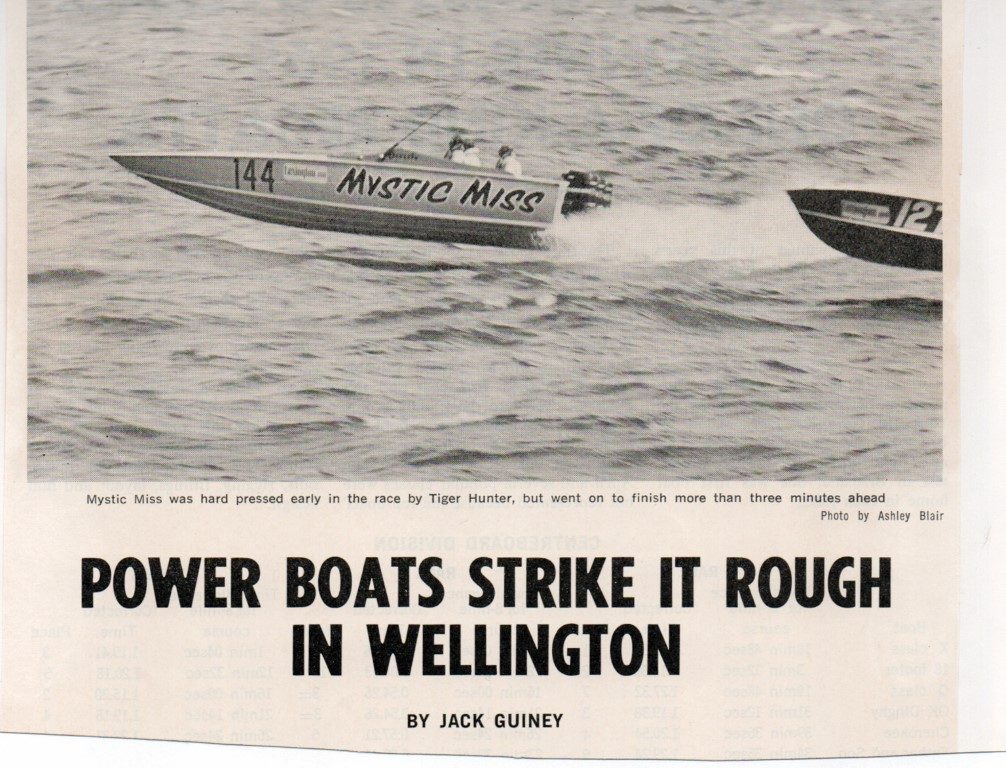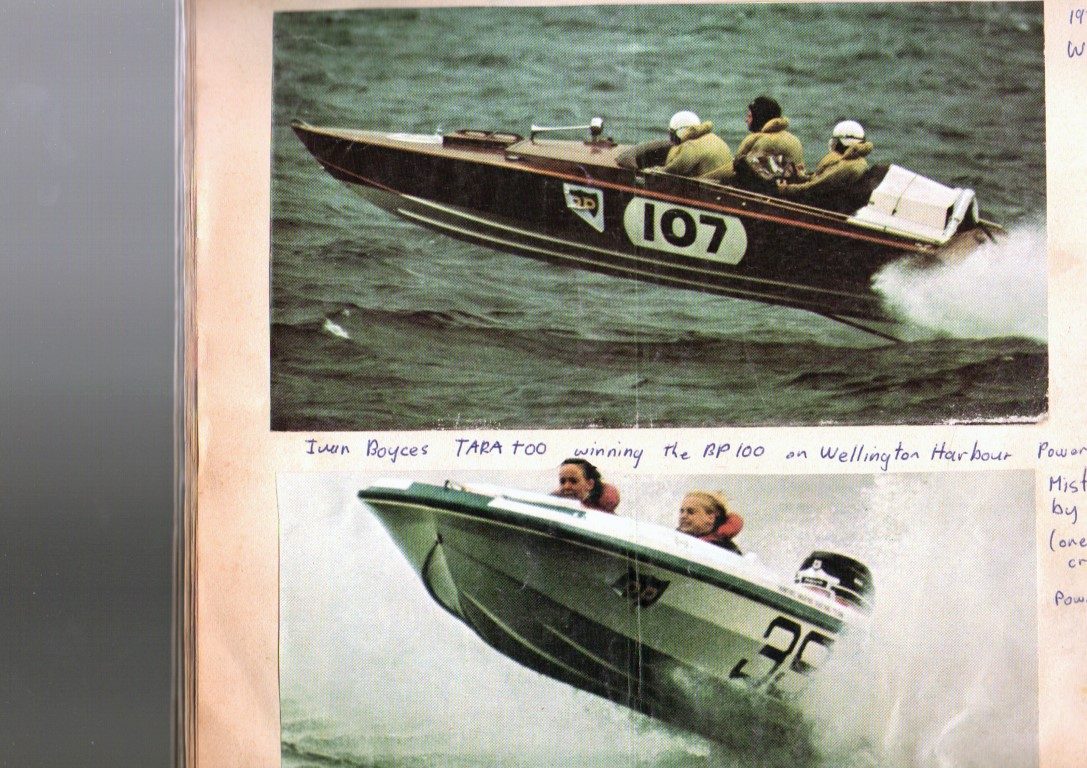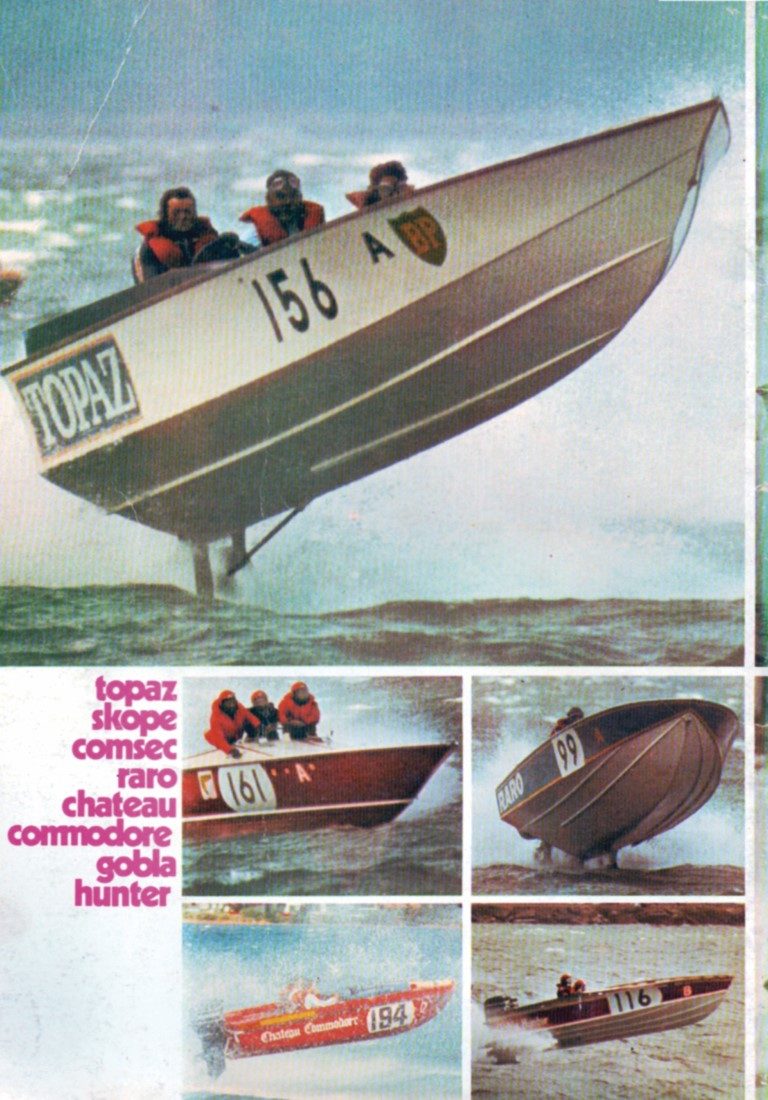

Gerard Richards revisits his youth, represented by a decade-long battle for racing supremacy between the V8 inboard and multiple outboard monohull rigs of the seventies.
The 1960s, the turbulent decade of revolution that challenged the status quo, was just about to end, but its legacy lived on.
Growing up on Auckland’s North Shore and turning 14 in December 1969, I was perfectly positioned to soak up the kaleidoscopic shift in hot-rod, car and boat racing culture. Loud, brash and dressed in metallic/dayglo colours, it was ‘in ‘yer face’ and we loved it!
My mates and I were into slot cars, pushbike racing and model power boat racing. One of our tribe suggested we ride our bikes from Mairangi Bay to Devonport Wharf in to take in the 1970 Atlantic six-hour power boat race marathon in the inner harbour. Duffel bags were crammed full of sandwiches, plus warm jerseys and oilskins, since our prime spectating location was exposed to all the elements.
The earth shifted for us that day! We were blown away by the visual and sonic impact of the thundering V8 inboard-powered racers and their multi-outboard rivals as they leapt into the air over the swells, brushing close to our wharf vantage point. The world was never quite the same again…

This adventure became a compulsory ritual for the next five years, with us hanging out at the wharf for the two Auckland races on the National Offshore Power Boat Championship calendar, the Atlantic 100 and the Atlantic 6-hour Marathon.
We were V8 racing addicts, it would be fair to say, seduced by the mighty Mustangs and Camaros we’d seen on local racetracks in the late 60s. We transferred our allegiance to them on the power boat racing scene too. The heavenly thunder of a racing V8 on song was a spiritual experience for us back then.
Outright speed seemed to favour the Chevrolet V8, the favourite power unit for boat racers of the day, but not always the most reliable – the outboards purpose-built for the marine environment often proved more robust, particularly in heavy seas.
Fibreglass was the amazing new material of the 60s and 70s that really helped fire up the pleasure boat and offshore race scene. Light and strong, it enabled the creation of some of the fastest boats of the era.

V8 power on the rise
Bill Stevenson, with his sleek yellow state-of-the-art offshore racer Mystic Miss, was breaking new ground with his triple 135hp Mercury-powered outboard rig. This was the cutting edge of the day, taking design and power to a new level. He and his crew of Drew Gordon and Gordon Holmes were the outfit to beat in 1969-70, with convincing wins in tough conditions in the 1970 Gisborne and 1969 Wellington 100 races.
But the mighty hot-rodded Chevy powerhouses were starting to make their presence felt in 1969. First up was Brian Millett and Bruce Perris, bringing their V8-powered Kitten home second to Tiger Hunter – twin 135hp Mercury outboards – skippered by John Meredith and Colin James in the 1969 Gisborne race.
A breakthrough win was achieved by Willie and Dennis Coughey from Auckland, with Panic Mouse in the 1969 Atlantic 100. Based on a Bertram hull and built by John Haines of Haines Hunter fame, it was equipped with a highly-modified 327 cubic inch (cu in) Chevy V8.

Willie told me: “It was fitted with big heads, needle roller cams, was balanced and built by top engine builder Kevin Lamb”. This was taking dedication to a new level, in a racing category that was initially intended for commercial pleasure boats…
With his brother Dennis on the trim tabs, stabilising the boat in the big swells out the back of Rakino, Willie remembers they mowed down Bill Stevenson’s Mystic Miss’s lead, reaching speeds as high as 70 miles an hour (61 knots/113kph). They ran out easy winners from another emerging V8 legend Tara Too. There was some talk Tara Too was closing the gap, but Coughey remembers they deliberately throttled back over the closing stages.
They also went on to win the Rotorua race that year.

Tara Too was designed by Rex Henry and driven by the legendary Ivan Boyce in its winning years. Mechanical problems precluded any outright success in 1969, but 1970 saw two wins in the Atlantic 100 and later in the season at the very rough Wellington race. Built of heart kauri, with metal reinforcement, Tara Too was a strong, heavy boat, but this probably accounted for its excellent handling in tough conditions. Fitted with a 427 cu in Chevrolet Corvette V8 engine, with twin Holley 780cf carbs on an Edelbrock quad-ram inlet manifold, it was not short of power. Once reliability issues had been sorted, it took the 1971 offshore season by storm for Ivan Boyce and crew. Wins included the 1971 Atlantic 100 and the 1972 Taupo 100.
1972-73 saw the revenge of the multi-outboard rigs. John Meredith’s 3 x 140hp Mercury-powered Formula, Max Johnson’s twin Mercury 135hp Miss Comsec and Mick Sheridan’s twin 115hp Johnson Stinger-powered Vista Nicolette scored the lion’s share of the honours that season. Meredith took Formula to victory in both the 1972-73 Gisborne races, the 1972 Wellington BP 100 and fourth in the 1973 Atlantic 100. Miss Comsec won the 1972 Atlantic 6 hours and Clipper Commander, powered by 3 x 125hp Evinrudes, took victory in the 1972 Atlantic 100.

The inboard V8 opposition, included some interesting runners like Jetmark, a 350 cu in Chev V8-powered jetboat built by Bill Hamilton’s Hamilton Jet company, Tara Too, which was beginning to lose its edge, Hugh Fawcett’s Terrific Chev V8, plus the first appearance of Chev Camaro circuit racing legend Spinner Black, with his original 427 cu in Chev V8-powered Turtle.
John Meredith’s, 140hp triple-Merc powered Formula was the class act of the era though, particularly in rough conditions, heading out the opposition, if not necessarily with outright speed, but certainly in resilience in adverse seas. This mighty boat’s later incarnations included Bonz Formula before it was later skippered by Roger Ward under the new name Raro in 1977-78.




